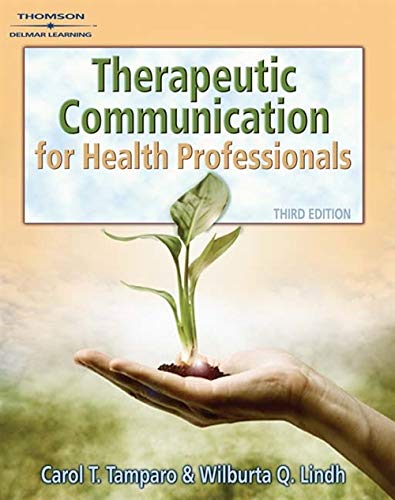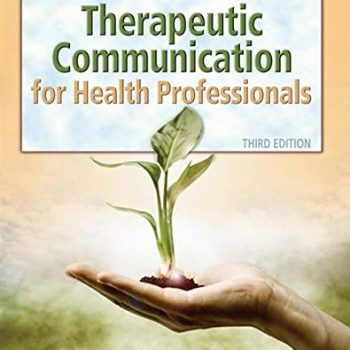Test Bank For Therapeutic Communications For Health Care 3rd Ed By Tamparo
Chapter 3: The Helping Interview
MODIFIED TRUE/FALSE
1.Control is a critical factor in the helping interview. Even using patient or client implies superior/inferior, higher/lower, more-knowledge/less-knowledge. _________________________
ANS: F, patient (not client)
PTS: 1
2.Your personal appearance and the appearance of the medical office are vital keys in the helping interview. _________________________
ANS: T PTS: 1
3.When meeting clients for the first time, it is best to address them informally by their first names to lessen their anxiety. ________________________________________
ANS: F, formally by their last name
PTS: 1
4.In the helping interview, during resolution, allow time for the client to think about what has just been said and to formulate any questions. _________________________
ANS: T PTS: 1
5.During the orientation phase of the helping interview, it is best for the client to be standing when the health professional is seated. _________________________
ANS: F, seated
PTS: 1
6.It is advisable to make “small talk” when leading the client from the reception area to the exam room. _________________________
ANS: T PTS: 1
7.In the helping interview, genuineness means that there will be congruency between the verbal and nonverbal messages. _________________________
ANS: T PTS: 1
8.“Tell me about a typical day with your baby” is an example of an indirect statement. _________________________
ANS: T PTS: 1
MULTIPLE CHOICE
1.In the helping interview, the person needing help (vs. the person giving help) feels
|
a. |
powerful |
d. |
gratified |
|
b. |
frightened or embarrassed |
e. |
b and c |
|
c. |
sad or angry |
||
ANS: E PTS: 1
2.The orientation component of the helping interview involves
|
a. |
very little preparation on the part of the health professional |
|
b. |
only the client and health professional |
|
c. |
empathy, not sympathy |
|
d. |
more risk for the client than the health professional |
|
e. |
none of the above |
ANS: D PTS: 1
3.The clients says, “I cannot control my disease!” The health professional responds, “How is your mother doing?” This is an example of what roadblock?
|
a. |
defending |
c. |
reassuring cliche |
|
b. |
shifting |
d. |
none of the above |
ANS: B PTS: 1
4.In levels of need, if the client seems panicked, it means that the
|
a. |
health care professional should talk more rapidly |
|
b. |
client does not listen |
|
c. |
client expects professional to help |
|
d. |
health care professional must supply advice |
ANS: B PTS: 1
5.The following is a closed question.
|
a. |
“When you move your foot, does it hurt?” |
|
b. |
“What foods cause your indigestion?” |
|
c. |
“When do you experience pain? |
|
d. |
“What actions bring on your productive cough?” |
ANS: A PTS: 1
6.Statement(s) that is/are a roadblock(s) to communication include(s)
|
a. |
Patting the client on the arm saying, “Everything will be OK after the doctor sees you.” |
|
b. |
“You couldn’t be sweating that much!” |
|
c. |
“Why did you do that to your daughter?” |
|
d. |
“If I were you, I’d just forget about the death of your spouse if it’s so painful.” |
|
e. |
all of the above |
ANS: E PTS: 1
7.The following statement is moralizing/lecturing.
|
a. |
“I’d never say that to you.” |
|
b. |
“Why can’t you just follow the doctor’s orders?” |
|
c. |
“You really ought to have done it this way.” |
|
d. |
“I just know it’ll get better for you.” |
ANS: C PTS: 1









Reviews
There are no reviews yet.